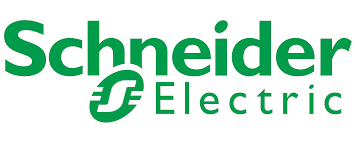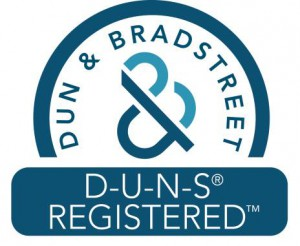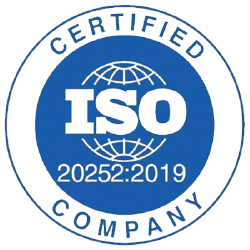Seite aktualisiert :
Jul 2025
MARKTEINFÜHRUNG Materialien für Verteidigungsflugzeuge sind leistungsstarke, leichte Materialien, die für den Flugzeugbau geeignet sind. Es verfügt über viele Eigenschaften, die es zum geeigneten Produkt für Verteidigungsflugzeuge machen. Eigenschaften wie mechanische Leistung, einfache Installation, Rissfestigkeit, Temperaturwechselbeständigkeit, Wärmeausdehnung, Entflammbarkeit und Tarnung machen es zu einem geeigneten Produkt für den Flugzeugbau. Aufgrund seiner Eigenschaften wie geringes Gewicht, Festigkeit und Korrosionsbeständigkeit eignet sich Aluminium ideal für Materialien für Verteidigungsflugzeuge. Doch heutzutage werden Materialien für Verteidigungsflugzeuge wie Stahl und Aluminium zunehmend durch Materialien mit geringer Dichte wie Legierungen und fortschrittliche Verbundwerkstoffe wie Kohlefasern ersetzt. MARKDTYNAMIK Die steigende Nachfrage nach treibstoffeffizienten Flugzeugen treibt vor allem den Markt für Materialien für Verteidigungsflugzeuge an. Der Einsatz von Materialien wie Verbundwerkstoffen oder Titanlegierungen reduziert das Gewicht des Flugzeugs, was wiederum die Treibstoffeffizienz des Flugzeugs verbessert. Die Steigerung der Treibstoffeffizienz von Verteidigungsflugzeugen veranlasst die Streitkräfte, in Verbundwerkstoffe und Titanlegierungsmaterialien zu investieren. Daher kurbelt der wachsende Bedarf an treibstoffeffizienten Flugzeugen im Laufe der Jahre das Wachstum des Marktes für Materialien für Verteidigungsflugzeuge an. Der Fortschritt in der Verteidigungstechnologie auf der ganzen Welt hat dazu beigetragen, leichte, hochfeste Materialien für den Flugzeugbau zu entwickeln. Diese leichten Materialien wie Titanlegierungen, Verbundwerkstoffe und andere sind kostengünstig und günstiger als Aluminiumlegierungen oder Stahllegierungen. Die kostengünstigen, leichten Materialien treiben den Markt für Materialien für Verteidigungsflugzeuge voran. MARKTUMFANG Die „Globale Marktanalyse für Verteidigungsflugzeugmaterialien bis 2031“ ist eine spezialisierte und eingehende Studie der Lebensmittel- und Getränkeindustrie mit besonderem Fokus auf die globale Markttrendanalyse. Ziel des Berichts ist es, einen Überblick über den Markt für Materialien für Verteidigungsflugzeuge mit detaillierter Marktsegmentierung nach Flugzeugtyp, Materialtyp und Geografie zu geben. Es wird erwartet, dass der Markt für Materialien für Verteidigungsflugzeuge im Prognosezeitraum ein hohes Wachstum verzeichnen wird. Der Bericht liefert wichtige Statistiken zum Marktstatus der führenden Marktteilnehmer für Materialien für Verteidigungsflugzeuge und bietet wichtige Trends und Chancen auf dem Markt. MARKTSEGMENTIERUNG Der globale Markt für Verteidigungsflugzeugmaterialien ist nach Flugzeugtyp und Materialtyp segmentiert. Auf der Grundlage des Flugzeugtyps wird der Markt in Kampfflugzeuge und Nichtkampfflugzeuge unterteilt. Auf der Grundlage der Materialart wird der Markt in Aluminiumlegierungen, Stahllegierungen, Titanlegierungen, Verbundwerkstoffe und andere unterteilt. REGIONALER RAHMEN Der Bericht bietet einen detaillierten Überblick über die Branche, einschließlich qualitativer und quantitativer Informationen. Es bietet einen Überblick und eine Prognose des Marktes für Verteidigungsflugzeugmaterialien basierend auf verschiedenen Segmenten. Es bietet außerdem Marktgrößen- und Prognoseschätzungen für die Jahre 2021 bis 2031 in Bezug auf fünf Hauptregionen, nämlich: Nordamerika, Europa, Asien-Pazifik (APAC), Naher Osten und Afrika (MEA) und Südamerika. Der Markt für Verteidigungsflugzeugmaterial nach Regionen wird später nach jeweiligen Ländern und Segmenten unterteilt. Der Bericht umfasst die Analyse und Prognose von 18 Ländern weltweit sowie den aktuellen Trend und die in der Region vorherrschenden Chancen. Der Bericht analysiert Faktoren, die den Markt für Materialien für Verteidigungsflugzeuge sowohl auf der Nachfrage- als auch auf der Angebotsseite beeinflussen, und bewertet weiter die Marktdynamik, die den Markt während des Prognosezeitraums beeinflusst, d. h. Treiber, Beschränkungen, Chancen und zukünftige Trends. Der Bericht bietet außerdem eine umfassende Schädlingsanalyse für alle fünf Regionen, nämlich: Nordamerika, Europa, APAC, MEA und Südamerika nach Bewertung politischer, wirtschaftlicher, sozialer und technologischer Faktoren, die den Markt für Verteidigungsflugzeugmaterial in diesen Regionen beeinflussen. MARKTSPIELER Die Berichte behandeln wichtige Entwicklungen auf dem Markt für Materialien für Verteidigungsflugzeuge sowie organische und anorganische Wachstumsstrategien. Verschiedene Unternehmen konzentrieren sich auf organische Wachstumsstrategien wie Produkteinführungen, Produktzulassungen und andere wie Patente und Veranstaltungen. Zu den auf dem Markt beobachteten anorganischen Wachstumsstrategien gehörten Akquisitionen sowie Partnerschaften und Kooperationen. Diese Aktivitäten haben den Weg für die Erweiterung des Geschäfts und des Kundenstamms der Marktteilnehmer geebnet. Aufgrund der steigenden Nachfrage nach Verteidigungsflugzeugmaterial auf dem Weltmarkt werden den Marktteilnehmern auf dem Markt für Verteidigungsflugzeugmaterial künftig lukrative Wachstumschancen geboten. Nachfolgend finden Sie eine Liste einiger Unternehmen, die auf dem Markt für Materialien für Verteidigungsflugzeuge tätig sind. Der Bericht enthält auch die Profile der wichtigsten Unternehmen sowie deren SWOT-Analyse und Marktstrategien im Markt für Materialien für Verteidigungsflugzeuge. Darüber hinaus konzentriert sich der Bericht auf führende Akteure der Branche mit Informationen wie Firmenprofilen, angebotenen Komponenten und Dienstleistungen, Finanzinformationen der letzten drei Jahre und den wichtigsten Entwicklungen in den letzten fünf Jahren.
- • AMG-Gruppe • Die Boeing Company • Constellium SE • Henkel Adhesives Technologies • ICF International Inc. • Novelis • Pratt und Whitney • SABIC • Solvay SA • Toray Composite Materials America, Inc.
- Historische Analyse (2 Jahre), Basisjahr, Prognose (7 Jahre) mit CAGR
- PEST- und SWOT-Analyse
- Marktgröße Wert/Volumen – Global, Regional, Land
- Branchen- und Wettbewerbslandschaft
- Excel-Datensatz
Aktuelle Berichte
Erfahrungsberichte
Grund zum Kauf
- Fundierte Entscheidungsfindung
- Marktdynamik verstehen
- Wettbewerbsanalyse
- Kundeneinblicke
- Marktprognosen
- Risikominimierung
- Strategische Planung
- Investitionsbegründung
- Identifizierung neuer Märkte
- Verbesserung von Marketingstrategien
- Steigerung der Betriebseffizienz
- Anpassung an regulatorische Trends
Unsere Kunden






























Verkaufsunterstützung
US: +1-646-491-9876
UK: +44-20-8125-4005
Email: sales@theinsightpartners.com
Chatten Sie mit uns

87-673-9708

ISO 9001:2015





 Kostenlose Probe anfordern für - Markt für Materialien für Verteidigungsflugzeuge
Kostenlose Probe anfordern für - Markt für Materialien für Verteidigungsflugzeuge